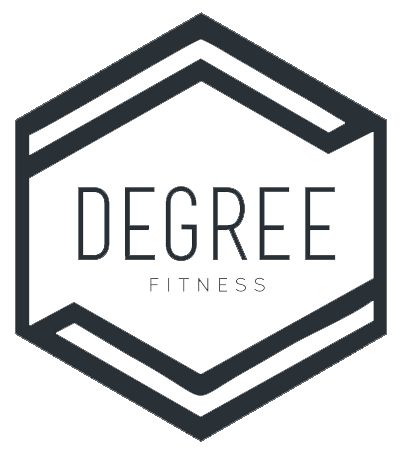Blog Layout
Pacing in CrossFit
December 12, 2020
Written By: Coach James The workout of the day is a 20 minute AMRAP, containing some straightforward bodyweight movements of skipping, air squats, sit ups and burpees. You think to yourself, “I can do all of these movements, I am going to crush this workout, start that clock!” You hear...3, 2, 1 GO and you are off. You complete your second round (starting to breath very heavy) and you look up at the clock and realize that you are only 2 minutes into the workout. A wave of panic washes over you as you suddenly realize that you feel gassed and you know that you still have a very long way to go! I am sure that we have all, at some point in our Crossfit careers, experienced that feeling.
While it is important to push ourselves and go hard, it is just as important to pace ourselves so that we can finish the workout with confidence and get the most out of the training.
At the same time, Under-pacing, and not challenging ourselves enough is a very real problem also. Finding that balance between the two extremes is the key. Finding a pace that makes you work hard, but not so hard that you are unable to finish.
Here are a couple of options to help develop your pacing awareness:
1. Record your split (round) times
When you do an AMRAP or “for time” workout, record your time at the end of each round (or take mental note if you are able, then you do not have to stop working). You may see a small increase in your round times due to fatigue, but as you get a greater awareness and skill with pacing, you will be able to minimize the drop off in times and keep your rounds/split times more consistent.
2. Try for Negative split times
Simply put, your split times get quicker each round. You may need to go a little slower than you typically would on your first round or two, to allow you some room to increase your pace each round. The idea of “Adaptation” is closely linked to this approach. That is the body’s ability to adapt to the workload that it is being asked to perform. Think of it like starting our vehicles on a cold winter morning. The vehicle will run and perform much better if you let it warm up to operating temperatures before you ask it to drive 120km/h down the 401 at rush hour. Our bodies are the same, they need a round or two to adapt to the work before it is up to “operating temperatures” and willing to perform at a high pace.
If you feel like you struggle with pacing, give one or both of these options a try. Like anything we do or any new skill we are trying to learn, it takes practice, practice and more practice. So be patient, be consistent, and the results will follow!
Would you like to learn a new skill or work on a specific movement? Email Coach James at james@degreefitnesseaforth.com
to book a skill session and have you feeling even more confident with your abilities.

February 12, 2025
Written By: Mairead, Registered Dietitian February is Heart Health Month! So what better time to focus on habits that can help improve our cardiovascular (or heart) health! Cardiovascular disease includes high blood pressure, high cholesterol, and coronary artery disease. All of these factors can increase your risk of having a heart attack or stroke. While some of your risk is genetic, many factors can be improved with lifestyle habits - which are in our control! Check out these ways you can improve your heart health this Heart Health Month! Know your risk level Many people may be walking around with high cholesterol or high blood pressure and not know it. If we don't know something is a problem, we can't fix it! Make sure to complete any tests your doctor recommends in a timely manner, and follow up afterwards. If you do find out there's a problem, it's much easier to start making changes when something is a smaller potential risk factor than after something serious has happened. Not sure where you're at? Ask your doctor if this is something you should monitor! Get enough exercise We don't have a magic pill that fixes everything, but exercise does come close! For heart health, exercise will help decrease your blood pressure and promote healthy cholesterol levels. The recommendation for most healthy Canadian adults is to aim for 150 minutes of "moderate to vigorous" exercise a week - this means your heart rate is up and you are breathing at least a bit harder than at rest. If you feel you fall short of that goal, try slowly increasing by 5-10 minutes a week as your body allows. Any type of exercise that gets your heart rate up counts! Watch your salt intake While we know we do need some salt or sodium in our diet, many of us eat too much salt. Much of this comes from processed foods or take out - it's not just about whether you add salt during cooking and at the table. For those who are at risk for high blood pressure, a high sodium intake can increase that risk, and decreasing your salt intake can help promote more normal blood pressure. Staying between 1800mg and 2300mg of sodium daily will make sure your body is getting what it needs without overdoing it. Try checking your labels to see if you're taking in more salt than you realize. Use the "percent daily value" on the right-hand side of the nutrition facts table - remember, 5% is a little bit, 15% is a lot! Increase your fibre intake Fibre does many great things for our body - including helping to improve your cholesterol levels, or maintain them in a healthy range. The total recommended amount of fibre daily is 20-25g for women and 30-38g for men - that's a lot!! Sources of fibre include vegetables, fruit, whole grains and whole grain products, nuts and seeds, and legumes. If you're choosing foods with a nutrition label, use the "percent daily value" to choose higher-fibre options. Remember to make changes in your fibre slowly and make sure you're properly hydrated to avoid any bowel upset. Remember, health isn't all or nothing! If you're ready to improve your heart health, pick one habit to focus on and figure out how you can implement in your daily life consistently! Looking for more personalized nutrition advice? Let's chat! Email mairead@degreefitnessseaforth.com for more information about our Nutrition Programs, or click HERE !

December 9, 2024
Written By: Mairead, Registered Dietitian There's just so much information out there about carbs. Are they good? Are they Bad? What about complex ones? When should you eat them? Will you lose weight if you don't eat them? With contradictory answers, it can be confusing and hard to know what's actually important and will help you improve your health and fitness! "Carbs" is short for carbohydrates, one of our main macronutrients. Carbs are the brain and body's preferred main source of fuel and energy. We can make that energy last longer by choosing carb options that are higher in fibre, and pairing them with protein and fat. These components help slow the break down of the carbs, making that energy last over a longer period of time, rather than leaving us feeling hungry and tired again quickly. Carbs are often referred to as "simple" or "complex". Simple carbs are foods like white bread, and are more processed and lower in fibre. Complex carbs are foods like whole grains, which are generally closer to being whole foods, are less processed, and are higher in fibre. Focusing on swapping simple carbs for complex options can help improve our heart and bowel health, better manage blood sugars, and promote more consistent energy levels throughout the day. Now, should you follow a low carb diet? It's totally up to you! For people with concerns about their blood sugars, it can be worth learning more about carbohydrates, how much are in certain foods, and how to time them consistently. For most normal healthy people, there are healthy ways to eat any amount of carbohydrates, as long we're including a variety of foods and not neglecting our other macronutrients (fat and protein). Low carb diets can help with weight loss for people who enjoy eating in that way over a long period of time. Like any diet changes, you need to be able to maintain it for the long-term. A low carb diet can create a calorie deficit (where you're taking in less calories than you are consuming), especially when carb foods are replaced with lower calorie foods (like vegetables) or those that might create more of a feeling of fullness (like proteins). Some people also see some quick initial weight loss when following a low carb diet - this is often water weight rather than true body mass loss, because carbs cause the body to hang on to a little bit of extra fluid. This initial loss will quickly return if you go back to eating your normal amount of carbs. Like anything in nutrition, there's a lot of variation in what can make up a healthy diet! When it comes to carbs, aim for higher fibre and more complex options to improve your overall health. Looking for more personalized nutrition advice? Let's chat! Email mairead@degreefitnessseaforth.com or click HERE for more info about our Nutrition Programs!

November 25, 2024
Written By: Mairead, Registered Dietitian With a New Year often comes New Year's resolutions. The "New Year, New Me" energy is everywhere, especially in terms of health and fitness. But when it comes to actually achieving those goals, it can be a whole other story. Many people give up on their goals early on in the year - but a bit more thought up front and a dose of reality can help you set better resolutions and actually achieve them this year! Check out these tips to make 2025 the year you crush your resolutions! Set goals that are actions, not outcomes! Often people set goals like "be healthier", "lose weight", or "build muscle". While these can be great things to aim for, they are outcomes of other actions, not actions themselves. These outcomes happen because of other activities. For example, if the outcome you want is to build muscle, the actions you might focus on to achieve this are going to be strength training and meeting your protein goals. If you want to lose weight, your action goals might be developing a consistent exercise routine and focusing on balanced meals. These actions are things you are in control of, rather than outcomes of other activities. Be realistic about your life and yourself! Despite the "New Year New You" hype, you will still be yourself on January 1st, and many aspects of your life may still be the same as they were in 2024. We often set goals that are just too aspirational or that fit with someone else's lifestyle but not our actual reality. Maybe your goal is to exercise more so you plan to wake up at 5am every day to make this happen. But what if your reality is that you're just not a morning person, or you have a job with fluctuating shifts? A more realistic plan might be to find an exercise routine that you can do at a different time of day, or that is more flexible. The easier it is to fit your goal into your current life, the more likely you are to actually achieve it! Think through the steps you'll need to achieve your goals - and then plan for them! Setting a goal is only the first step to making it a reality. There are likely at least a few other steps you need to take to get there. Taking the time to figure out what those steps are and chipping away at them will help you make your goals a reality. For example, maybe your goal is to eat enough protein because you're trying to build or maintain muscle. Your steps might include meeting with a Registered Dietitian to find out how much protein you need and learn more about how to include it in your diet. Then maybe you need to learn to cook one or two new protein options or research recipes. Maybe you need get into the habit of meal planning. The main goal is just the tip of the iceberg - the steps behind it are what make it a reality. Let go of "all or nothing" thinking in your goals! When people "fail" at their resolutions, it's often because they pick goals that are inflexible or too extreme. When people can't stick to these rigid goals, they end up giving up, rather than figuring out how to adapt. Setting goals that are more flexible will make it easier to roll with the punches throughout the year, rather than throwing in the towel in the first month. For example, setting a goal of cutting out all sugar is very "all or nothing". The first time you're confronted with a treat while out or give into a craving, you might just give up. Changing the goal to eat less of specific sugary foods (but not cutting them out entirely) might be more realistic. You might even choose to pick a certain frequency that you'll enjoy them that is less than your current amount. Goals don't have to be extreme to help you still see improvements in your health and fitness! So tell us, what are your goals for 2025? By setting better and more realistic goals, and making plans for them, you can make changes to see big gains in your health and fitness this year! For more personalized nutrition advice? Let's chat! Email mairead@degreefitnessseaforth.com or click HERE for more information about our Nutrition Programs!
POLICIES
CONNECT
Contact Us
Thank you for contacting us!
We will get back to you as soon as possible.
Oops, there was an error sending your message.
Please try again later.
© 2025
All Rights Reserved | Degree Fitness Seaforth
